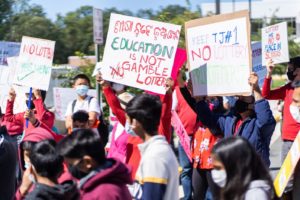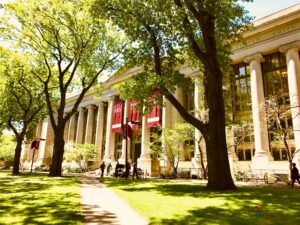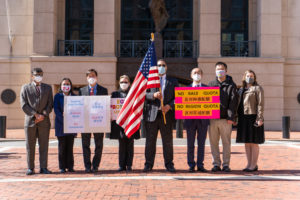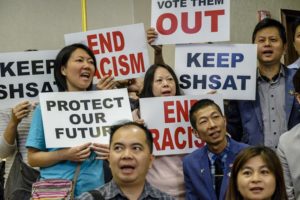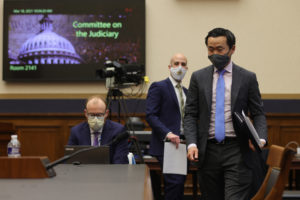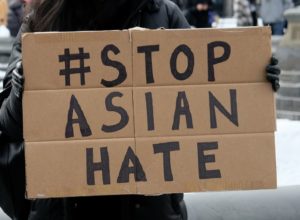The Wall Street Journal: Schools offer empty words to Asians
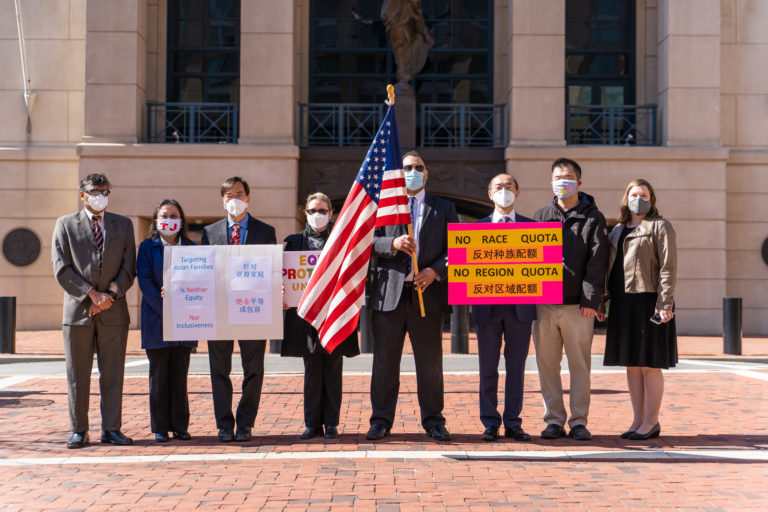
The horrific murders in Atlanta last week inspired an outpouring of support for Asian-Americans. “An attack on any group of us is an attack on all of us—and on everything we represent as an institution,” Harvard President Lawrence Bacow said in a statement. “To Asians, Asian Americans, and Pacific Islanders in our community: We stand together with you today and every day going forward.” Virginia’s Fairfax County public schools proclaimed that “Anti-Asian hate impacts our students, our colleagues, our families, and our community” and promised to “address misinformation and xenophobic language” that promotes “exclusion” of Asian-Americans.
Yet these schools and many others discriminate against Asian-Americans in their admissions policies. In some cases, this practice is couched in doublespeak about “diversity,” “equity” and “inclusion.” In others, it is accompanied by the same type of bigotry these schools condemn.
My colleagues and I represent many Asian-American families who have felt the sting of discrimination. One case involves a coalition of Asian-American parents in Fairfax County, including Hanning Chen, who left China to pursue an education in the U.S. and is now a university professor. Mr. Chen’s eldest daughter attends Thomas Jefferson High School, known as TJ. Her younger sister may find the schoolhouse door closed to her.
In December, Fairfax County changed TJ’s admissions policies amid rising sentiment that there were “too many” Asian-American students. The county replaced an objective admissions test with a process calculated to achieve a racially “balanced” student body at the expense of Asian-American applicants.
Harvard has been sued over its race-conscious admissions policy. The plaintiffs contend that Harvard discriminates by assigning Asian-Americans lower “personal ratings,” which are supposed to denote characteristics like leadership and grit. The Princeton Review has advised Asian-American applicants to refrain from noting that they intend to pursue a career in medicine or major in math or science, lest they appear “too Asian.” The Justice Department brought a similar lawsuit against Yale last year, but the Biden administration dropped it in February.
Other public-school systems engage in similar discrimination to limit Asian-American students’ success. Montgomery County, Md., commissioned a report on how to increase diversity and commit to its “core value of equity.” Its finding that Asian-Americans were “overrepresented” in magnet middle schools led to changes in the admissions process that significantly reduced their numbers.
New York Mayor Bill de Blasio claims the city’s transparent and objective process for admissions to specialized schools such as Stuyvesant, Bronx Science and Brooklyn Tech has led to too many Asian-American students. He called the racial composition of those schools a “monumental injustice.” Mr. De Blasio changed the admissions policy to make it harder for many Asian-American students, many from low-income families, to get in.
A welcome discussion about anti-Asian rhetoric shouldn’t exempt progressive proponents of “equity” and racial balancing. Allison Collins, vice president of the San Francisco Board of Education, once accused Asian-Americans of using “white supremacist thinking to assimilate and ‘get ahead’ ” and called merit-based admissions at Lowell High School “racist” since the school was majority Asian-American.
These comments are not only hateful, but inaccurate. There is no inherent “problem” in a school’s having a majority Asian-American student body. Not all disparities result from discrimination. Sometimes they merely reflect individual preferences. All Americans should aspire to make the nation one in which outcomes are determined by individual abilities, aspirations and achievements. Educational institutions’ opposition to racial hatred is welcome. But it would be more credible if they didn’t engage in racial discrimination.
This op-ed was originally published by The Wall Street Journal on March 25, 2021.







